Bridger-Teton National Forest
- January 4, 2024
- 0 comment
Located within the breathtaking landscapes of western Wyoming, the Bridger-Teton National Forest unfolds as a vast tapestry of natural wonders spanning 3.4 million acres. From dense forests and majestic mountains to crystalline streams and serene lakes, this pristine wilderness beckons adventurers and nature enthusiasts alike. As the third-largest National Forest outside of Alaska, Bridger-Teton plays a crucial role in the Greater Yellowstone Ecosystem, a sprawling expanse renowned for its ecological richness.

The forest’s diverse offerings include Gannett Peak, Wyoming’s highest summit, and the Gros Ventre landslide, a colossal geologic marvel. With over 2,000 miles of hiking trails, the Bridger-Teton National Forest invites exploration, promising an array of recreational activities in every season. Whether it’s encountering diverse wildlife, embarking on thrilling outdoor adventures, or simply relishing the tranquility of its untamed beauty, Bridger-Teton stands as a testament to the enduring allure of America’s wild landscapes.
Characterizing Features of the Bridger Teton National Forest
- Vast Geographic Diversity: The Bridger-Teton National Forest sprawls across 3.4 million acres, encompassing a rich mosaic of landscapes, from towering mountain ranges to dense forests and sprawling meadows. This vast expanse makes it the third-largest National Forest in the contiguous United States, offering an extensive canvas for outdoor enthusiasts and nature lovers.
- Integral Part of the Greater Yellowstone Ecosystem: As a crucial component of the Greater Yellowstone Ecosystem, Bridger-Teton plays a pivotal role in maintaining the ecological balance of this expansive region. Its intricate web of interconnected ecosystems supports diverse flora and fauna, contributing to the overall health and biodiversity of one of the largest intact ecosystems in the lower 48 states.
- Iconic Peaks and Geological Marvels: The forest boasts notable landmarks, including Gannett Peak, the highest summit in Wyoming, and the Gros Ventre landslide, one of the most substantial visible landslides globally. These geological features not only add to the visual grandeur but also serve as natural attractions, inviting exploration and admiration for the forces that shaped this pristine wilderness.
- Rich Wildlife Habitat: Bridger-Teton National Forest provides a haven for wildlife, hosting a remarkable diversity of species. From grizzly bears and wolves to bald eagles and cutthroat trout, the forest supports a thriving ecosystem. Its importance as a habitat for threatened and endangered species underscores its significance in preserving biodiversity and maintaining healthy wildlife populations.
- Extensive Trail Network: With over 2,000 miles of hiking trails, Bridger-Teton offers a myriad of recreational opportunities for visitors. These trails wind through various terrains, providing access to secluded wilderness areas, alpine meadows, and pristine lakes. The extensive trail network caters to both novice hikers and seasoned backpackers, allowing for a range of outdoor experiences.
- Year-Round Recreational Paradise: Bridger-Teton National Forest is a year-round destination, with activities ranging from summer camping and water sports to winter snowmobiling and skiing. The forest’s adaptability to different seasons ensures that visitors can engage in a diverse array of recreational pursuits, making it an ideal destination for outdoor enthusiasts throughout the year.
- Critical Water Source: The high altitudes and abundant snowfall in Bridger-Teton National Forest contribute significantly to the region’s water supply. With 1,500 lakes and headwaters for major rivers like the Yellowstone, Snake, and Green, the forest plays a vital role in maintaining water quality and supporting downstream ecosystems, emphasizing its broader ecological impact.
- Preservation of Wilderness Areas: Within the forest lie the Gros Ventre, Bridger, and Teton Wildernesses, totaling 1.2 million acres. These designated wilderness areas ensure the preservation of natural ecosystems, fostering a balance between human enjoyment and the conservation of pristine, untouched landscapes, contributing to the overall protection of the region’s ecological integrity.
History
Established in 1908 as the Teton Forest Reserve, the Bridger-Teton National Forest has a rich and storied history that mirrors the evolving attitudes towards land conservation in the United States. Its origins can be traced back to the early 20th century when concerns about deforestation and the depletion of natural resources prompted the federal government to designate vast swaths of land for preservation. Over the years, the forest underwent several name changes and expansions, culminating in its current status as the Bridger-Teton National Forest in 1964.
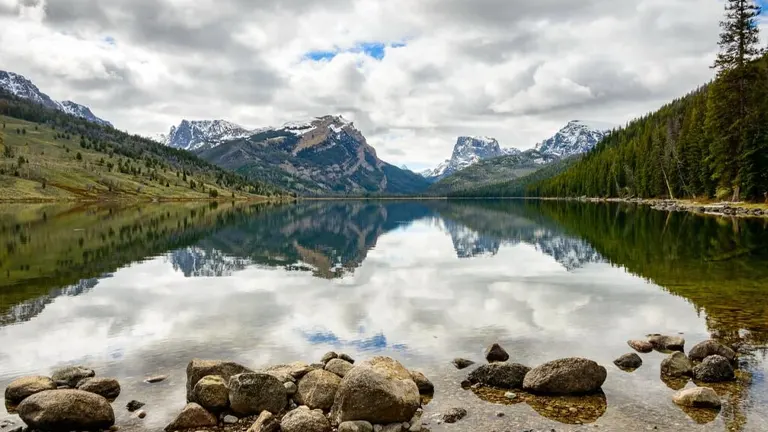
The renaming honors legendary mountain men Jim Bridger and Louis Vasquez, who played crucial roles in exploring and mapping the western territories. The forest’s boundaries were further expanded to encompass 3.4 million acres, securing its position as the third-largest National Forest in the contiguous United States. Today, Bridger-Teton stands not only as a testament to the foresight of conservation pioneers but also as a vital link in the Greater Yellowstone Ecosystem, contributing to the preservation of biodiversity and the protection of natural wonders for future generations.
Importance in Conservation and Recreation of Bridger Teton National Forest
The Bridger-Teton National Forest holds paramount importance in both conservation and recreation, serving as a cornerstone in the broader initiative to preserve natural landscapes. As a critical component of the Greater Yellowstone Ecosystem, the forest plays a pivotal role in maintaining biodiversity, providing habitats for numerous species, including threatened and endangered ones such as grizzly bears, gray wolves, and peregrine falcons. Its vast expanse of 3.4 million acres, rich in geological wonders like Gannett Peak and the Gros Ventre landslide, underscores the significance of preserving pristine wilderness.
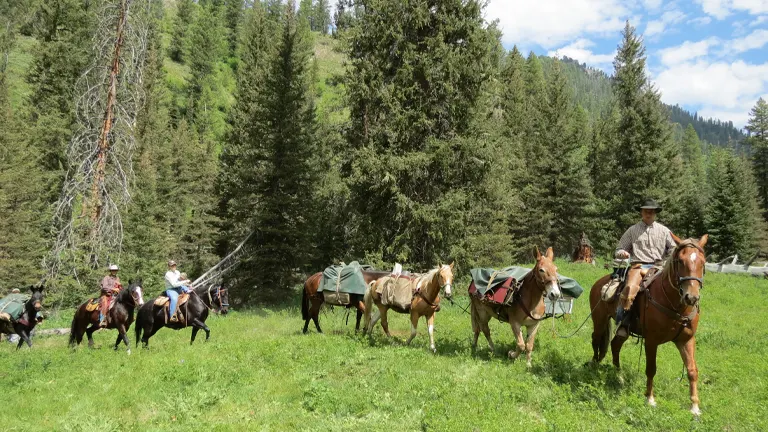
Simultaneously, the Bridger-Teton National Forest serves as a recreational paradise, offering over 2,000 miles of hiking trails, 37 developed campgrounds, and a plethora of activities throughout the year. Whether it’s hiking, camping, fishing, or winter sports, the forest provides a haven for outdoor enthusiasts, fostering a connection between people and the untamed beauty of the natural world. In balancing the dual objectives of conservation and recreation, Bridger-Teton stands as a testament to the harmonious coexistence of environmental preservation and human enjoyment, ensuring the enduring legacy of this remarkable landscape for generations to come.
Unique Location of Bridger Teton National Forest
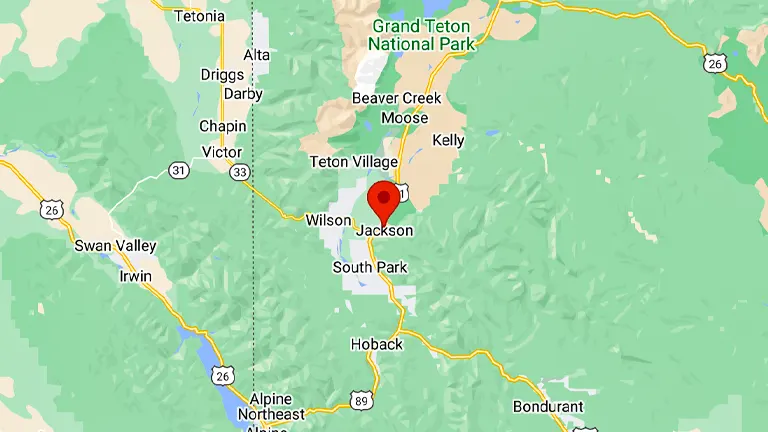
The Bridger-Teton National Forest occupies a uniquely captivating location in western Wyoming, positioned as a vast natural tapestry that stretches from the boundaries of Yellowstone National Park to the southern reaches of the Wind River Range. Stretching across 3.4 million acres, it stands as the third-largest National Forest in the contiguous United States. Bordered by the iconic Yellowstone National Park to the north and Grand Teton National Park to the east, Bridger-Teton forms an integral part of a triad of protected areas that collectively constitute the Greater Yellowstone Ecosystem, the largest intact ecosystem in the lower 48 states. The forest’s boundaries follow the eastern rim of Grand Teton National Park and extend along the western slope of the Continental Divide, reaching south to the Wind River Range, the Salt River Range, and the Wyoming Range mountains near the Idaho border. This strategic location not only contributes to its ecological significance but also places Bridger-Teton at the crossroads of diverse ecosystems, offering visitors a visual feast of alpine meadows, dense coniferous forests, and towering mountain peaks within a single, remarkable landscape.
Diverse Vegetation and Plant Species in Bridger Teton National Forest
- Lodgepole Pine (Pinus contorta): Bridger-Teton National Forest is characterized by extensive stands of lodgepole pine, a hardy and adaptable tree species well-suited to the region’s varying elevations. These trees dominate lower altitudes, creating dense forests and providing vital habitats for various wildlife.
- Engelmann Spruce (Picea engelmannii): Thriving at higher elevations, Engelmann spruce contributes to the forest’s diverse vegetation. Its tall, slender profile and evergreen needles make it a prominent component of the subalpine ecosystem within Bridger-Teton.
- Douglas Fir (Pseudotsuga menziesii): Widely distributed throughout the forest, Douglas fir adds to the botanical tapestry of Bridger-Teton. Its distinctive cones and flat needles are a common sight, particularly in mixed coniferous stands.
- Subalpine Fir (Abies lasiocarpa): Flourishing in the subalpine zones, subalpine fir contributes to the forest’s ecological diversity. These trees play a crucial role in shaping the landscape above the tree line and provide essential habitats for alpine wildlife.
- Aspen (Populus tremuloides): Aspen groves punctuate the landscape, particularly at lower elevations. Known for their distinctive white bark and vibrant autumnal foliage, aspen stands add visual variety to the forest and provide habitats for a range of species.
- Whitebark Pine (Pinus albicaulis): Noteworthy for its ability to thrive in harsh alpine environments, whitebark pine is a high-altitude species found in Bridger-Teton. Its importance extends beyond its ecological role, as it serves as a critical food source for wildlife, including the threatened grizzly bear.
- Willows, Grasses, and Sagebrush: Covering lower elevations, these plant species contribute to the diverse flora of the forest. They play a crucial role in supporting a variety of herbivores and serve as a transitional zone between forested areas and open meadows.
- Alpine Meadows: Above the timberline, alpine meadows flourish, showcasing a unique array of wildflowers adapted to the harsh conditions. These meadows contribute to the overall biodiversity of Bridger-Teton and offer stunning displays during the short growing season.


Bridger-Teton National Forest’s diverse vegetation reflects its varied elevations and ecosystems, creating a botanical tapestry that not only enhances the aesthetic appeal of the forest but also sustains a multitude of wildlife species. The unique combination of coniferous and deciduous trees, along with the rich understory, contributes to the overall ecological health and resilience of this remarkable wilderness.
Fauna
- Grizzly Bear (Ursus arctos horribilis): The Bridger-Teton National Forest provides a critical habitat for the threatened grizzly bear. As an apex predator, the grizzly plays a pivotal role in maintaining ecological balance, and efforts to protect and manage this species are integral to the overall health of the forest ecosystem.
- Gray Wolf (Canis lupus): Wolves, once extirpated from the region, have made a comeback in recent years. Their presence contributes to the natural predator-prey dynamics, fostering a healthier ecosystem and serving as a symbol of successful conservation efforts within Bridger-Teton.
- Black-footed Ferret (Mustela nigripes): Considered one of North America’s most endangered mammals, the black-footed ferret has found refuge in Bridger-Teton National Forest. Conservation initiatives, including reintroduction programs, aim to secure the future of this species within its native habitat.
- Peregrine Falcon (Falco peregrinus): Aerial hunters like the peregrine falcon thrive in the varied landscapes of Bridger-Teton. These magnificent birds contribute to the forest’s avian diversity and are indicative of the success of conservation measures aimed at protecting raptors.
- Elk (Cervus canadensis): Iconic and abundant, elk roam the forest’s meadows and woodlands. Their presence influences vegetation dynamics and supports the carnivores that rely on them, contributing to the overall biodiversity and ecological balance of Bridger-Teton.
- Moose (Alces alces): Inhabiting wetland areas and forested regions, moose are a distinctive species in Bridger-Teton. Their browsing habits shape the understory vegetation and contribute to the mosaic of habitats within the forest.
- Mule Deer (Odocoileus hemionus): Mule deer, adapted to a variety of environments, thrive in Bridger-Teton’s diverse landscapes. Their presence contributes to the overall richness of herbivore species and sustains local predators.
- Bighorn Sheep (Ovis canadensis): Scaling the rugged mountain terrain, bighorn sheep are adapted to the high elevations of Bridger-Teton. Their presence signifies the health of alpine ecosystems and adds to the visual spectacle of the forest’s mountainous regions.
- Bison (Bison bison): While not as numerous as in historical times, bison still inhabit the forest. Their grazing behaviors influence vegetation patterns, contributing to the mosaic of habitats within Bridger-Teton.
- Coyote (Canis latrans): Versatile and adaptable, coyotes are common in Bridger-Teton and play a crucial role in controlling rodent populations. Their presence is indicative of the forest’s ability to support a diverse array of predators.


The fauna of Bridger-Teton National Forest is as diverse as its vegetation, creating a complex and interconnected web of life. The conservation and management of these species are integral to preserving the ecological integrity of this vast and remarkable wilderness.
Attractions in Bridger Teton National Forest
1. Gannett Peak
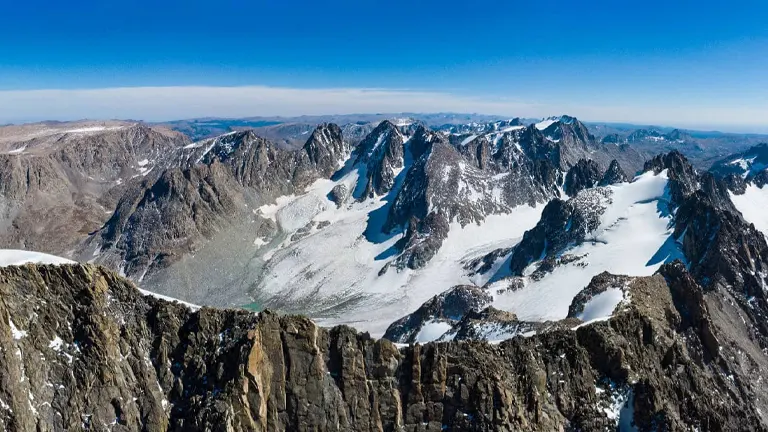
At 13,804 feet (4,207 meters), Gannett Peak stands as the crowning jewel of Bridger-Teton National Forest and is Wyoming’s highest summit. A challenging yet rewarding destination for mountaineers, Gannett Peak offers stunning panoramic views of the surrounding mountains and alpine landscapes. The peak’s prominence adds an allure to the forest, drawing adventurers seeking the thrill of conquering its heights while immersed in the pristine wilderness.
2. Green River Lakes
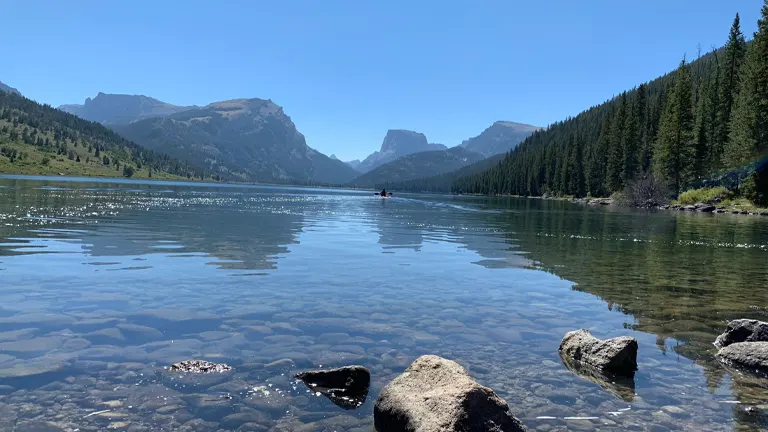
Positioned in the northern reaches of Bridger-Teton National Forest, Green River Lakes is a gem of unspoiled natural beauty. Twin turquoise lakes, set against a backdrop of rugged mountains, create a tranquil setting for visitors. Here, outdoor enthusiasts can engage in a variety of activities, from fishing in the clear alpine waters to hiking the surrounding trails. Green River Lakes exemplifies the untouched wilderness that Bridger-Teton is known for, providing a peaceful retreat into nature.
3. Wind River Range

The Wind River Range, situated in the southern part of Bridger-Teton, is a haven for outdoor enthusiasts and adventurers. With over 2,000 alpine lakes, towering peaks, and extensive hiking trails, it is a paradise for backpackers, climbers, and wildlife enthusiasts. The Winds showcase the wild beauty of Bridger-Teton, inviting exploration and providing a backdrop for rugged adventures amid some of the most dramatic mountain scenery in the United States.
4. Teton Wilderness
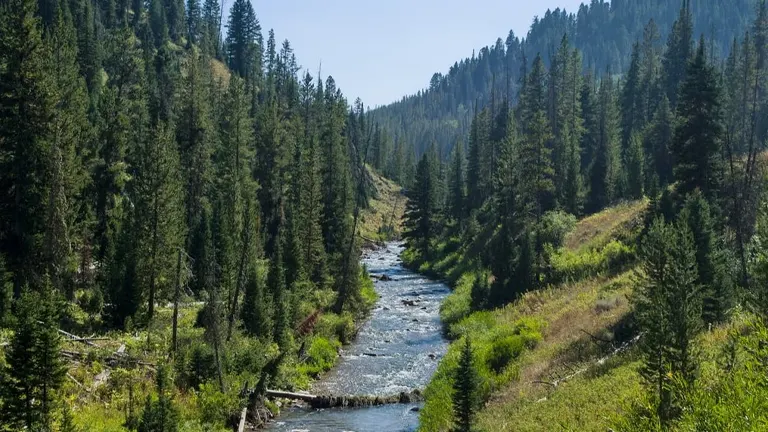
Embracing over a million acres, the Teton Wilderness within Bridger-Teton National Forest offers an unparalleled backcountry experience. As one of the largest wilderness areas in the U.S., it provides a refuge for diverse wildlife, including grizzly bears, wolves, and elk. Backpackers and nature enthusiasts can navigate through dense forests, alpine meadows, and rugged mountains, experiencing the untamed essence of Bridger-Teton.
5. Snake River Overlook
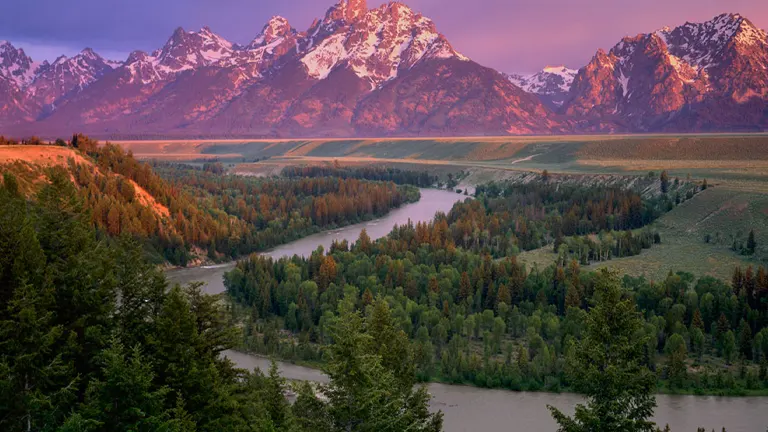
Immortalized by Ansel Adams, the Snake River Overlook is a scenic viewpoint accessible from Bridger-Teton National Forest, offering an iconic perspective of the Snake River winding through the Jackson Hole Valley with the Grand Teton as a majestic backdrop. This vantage point provides a timeless connection to the landscape, allowing visitors to witness the same breathtaking views that have inspired artists and nature enthusiasts for generations.
6. Teton Crest Trail

The Teton Crest Trail, a renowned long-distance hiking route, traverses the high alpine terrain of Bridger-Teton National Forest. Spanning over 40 miles, the trail offers breathtaking views of the Teton Range, pristine alpine lakes, and wildflower-strewn meadows. Backpackers on the Teton Crest Trail delve into the diverse ecosystems of the forest, from dense coniferous forests to expansive alpine vistas, making it a quintessential experience for hikers seeking the grandeur of Bridger-Teton.
7. Gros Ventre Wilderness
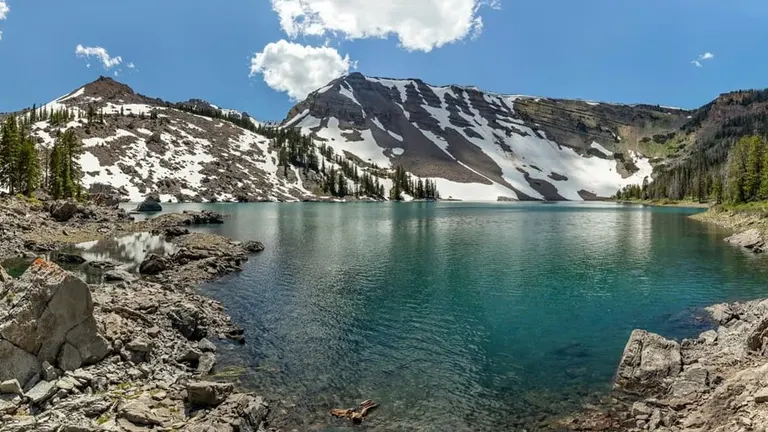
Encompassing vast expanses within Bridger-Teton, the Gros Ventre Wilderness boasts diverse landscapes, including verdant valleys, rugged peaks, and expansive plateaus. Designated as wilderness, it provides a sanctuary for wildlife and a remote escape for those seeking solitude in nature. Hiking and camping in the Gros Ventre Wilderness offer an authentic encounter with the untamed beauty and diverse ecosystems that define Bridger-Teton National Forest.
Bridger-Teton National Forest stands as a treasure trove of natural wonders and recreational opportunities, inviting visitors to explore its diverse landscapes, from towering peaks and geological marvels to pristine lakes and expansive wilderness areas. Each attraction adds a layer of uniqueness to the forest, making it a destination that captures the imagination and admiration of those seeking an authentic connection with nature.
Recreational Activities in the Bridger Teton National Forest
1. Hiking
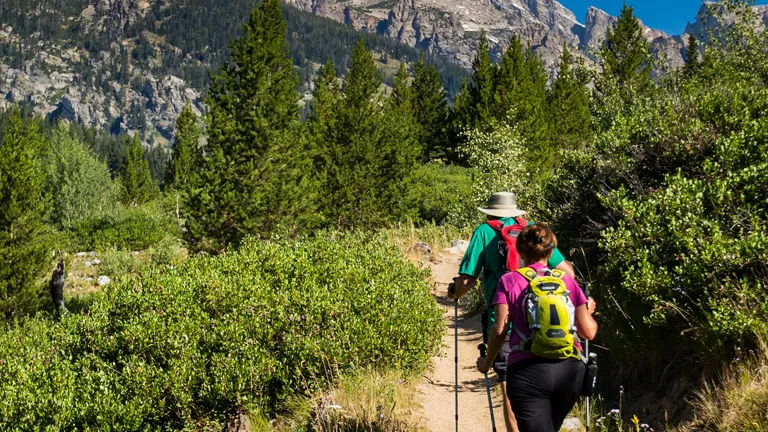
Bridger-Teton National Forest offers a vast network of over 2,000 miles of hiking trails, catering to all levels of enthusiasts. From leisurely strolls through alpine meadows to challenging ascents of rugged peaks, the diverse terrain ensures that hikers can explore a range of ecosystems, including dense forests, high-altitude meadows, and pristine lakes. Popular trails like the Teton Crest Trail provide stunning views of the Teton Range, making hiking a quintessential and accessible activity for visitors.
2. Camping
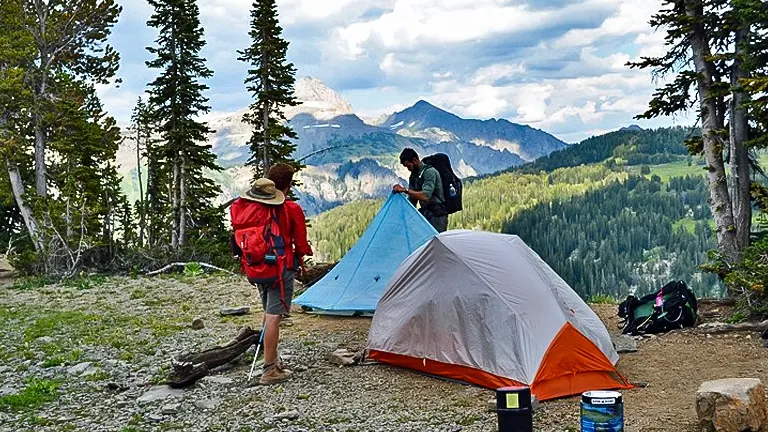
With 37 developed campgrounds and numerous dispersed camping opportunities, Bridger-Teton provides an array of options for camping enthusiasts. Whether seeking a family-friendly campground with picnic tables or a more secluded backcountry experience, visitors can immerse themselves in the forest’s natural beauty. Nighttime temperatures can vary, adding a touch of adventure to the camping experience, while the abundance of sites ensures that individuals and families can find the perfect spot to enjoy the forest under the stars.
3. Fishing
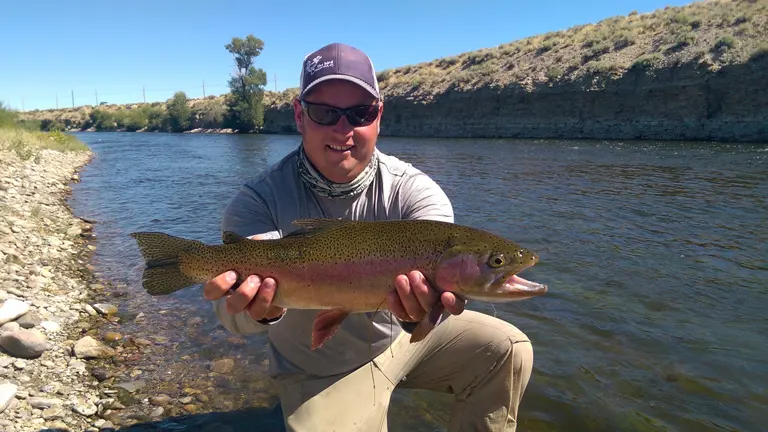
Bridger-Teton National Forest is a haven for fishing enthusiasts, with its 1,500 lakes and numerous rivers. The forest’s waters are home to various species, including cutthroat trout and other prized catches. Green River Lakes and the stretches of the Snake, Salt, and Green Rivers offer opportunities for both serene fishing excursions and more adventurous fly-fishing experiences, making it an ideal destination for anglers seeking diverse aquatic landscapes.
4. Water Sports

The forest’s rivers, including the Hoback and Gros Ventre, provide thrilling opportunities for water sports. Kayakers, canoeists, and rafters can navigate the meandering waterways, experiencing the beauty of Bridger-Teton from a unique perspective. For those seeking more adrenaline, the lower Snake, Hoback, and Gros Ventre rivers offer exciting rapids, adding an adventurous dimension to the water-based recreational options.
5. Winter Recreation
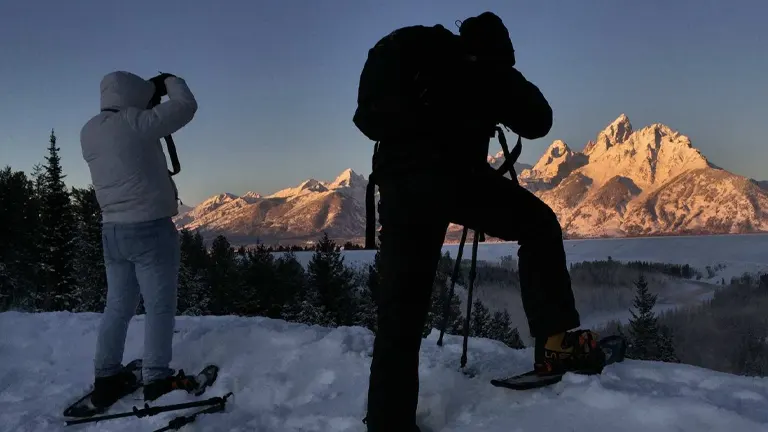
Bridger-Teton National Forest transforms into a winter wonderland, offering a plethora of recreational activities. Snowmobiling is popular on groomed trails, providing access to expansive snowy landscapes. Cross-country skiing and snowshoeing allow visitors to explore the forest’s quiet winter beauty, while ice climbing and downhill skiing are additional options for those seeking more adrenaline during the colder months.
6. Wildlife Viewing
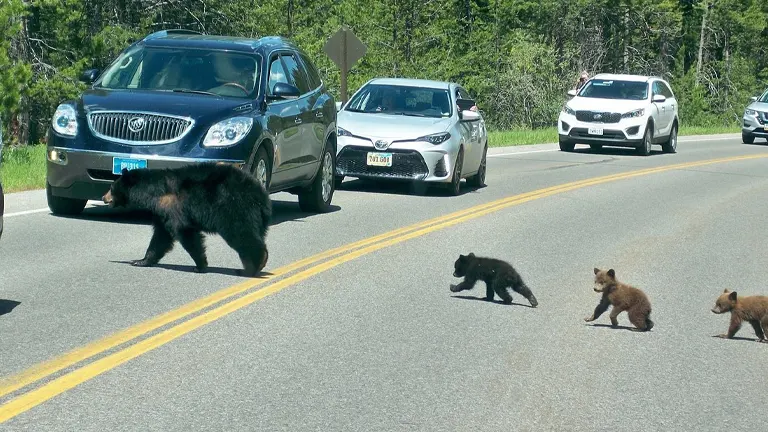
The forest’s diverse ecosystems make it an ideal destination for wildlife enthusiasts. Visitors can spot iconic species such as elk, moose, bighorn sheep, and even grizzly bears. The forest’s commitment to wildlife conservation ensures that enthusiasts can observe these animals in their natural habitats while adhering to responsible wildlife viewing practices to minimize disturbances.
7. Off-Road Vehicle (ORV) Riding
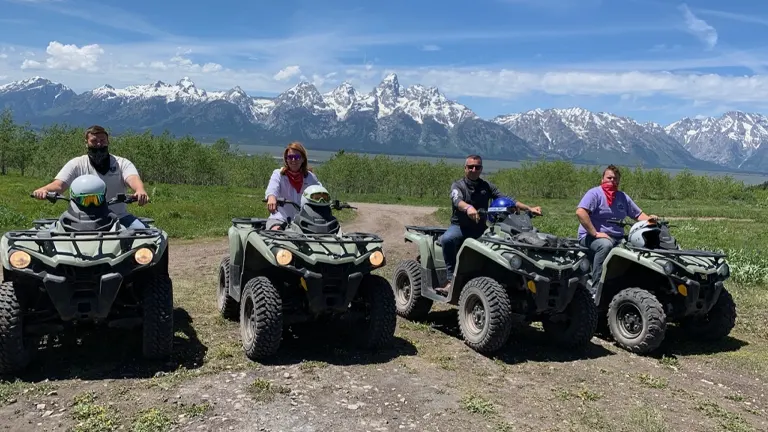
Bridger-Teton National Forest provides designated trails for off-road vehicle (ORV) riding, catering to those seeking adventure on wheels. Before hitting the trail, riders should check forest regulations to ensure a safe and enjoyable experience. ORV enthusiasts can explore the forest’s diverse landscapes, from wooded trails to open meadows, creating an exciting and dynamic recreational opportunity.
8. Rock Climbing
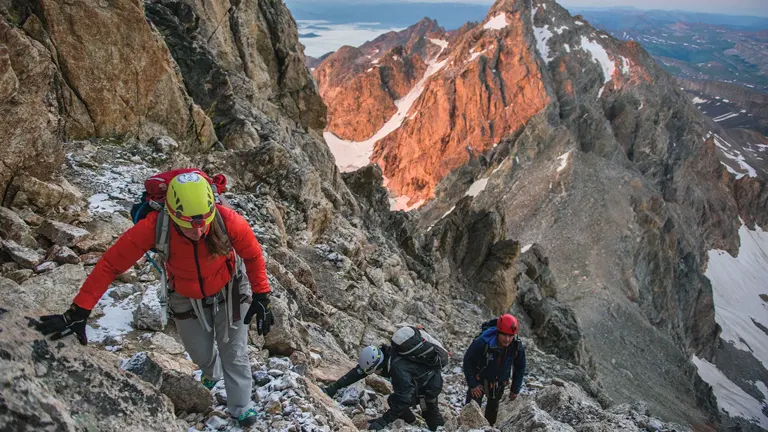
For thrill-seekers, Bridger-Teton offers opportunities for rock climbing, with various cliffs and formations providing challenges for climbers of different skill levels. Whether scaling the rugged peaks or ascending rock faces, climbers can enjoy the forest’s vertical terrain and panoramic views, making rock climbing a unique and exhilarating recreational pursuit within the forest.
Bridger-Teton National Forest’s diverse recreational activities cater to a wide range of interests, ensuring that visitors can immerse themselves in the natural splendor of the forest while engaging in their preferred outdoor pursuits.
Facilities and Amenities in Bridger Teton National Forest
- Visitor Centers: Bridger-Teton National Forest provides visitor centers strategically located to offer information, maps, and guidance to enhance visitors’ experiences. These centers serve as educational hubs, showcasing the forest’s ecosystems, wildlife, and recreational opportunities. Knowledgeable staff members are available to provide insights, ensuring that visitors can make the most of their time exploring the vast expanse of Bridger-Teton.
- Campgrounds: With 37 developed campgrounds, Bridger-Teton offers a range of camping experiences, from family-friendly sites with amenities to more remote and primitive locations. These campgrounds provide essential facilities such as picnic tables, fire rings, and access to restroom facilities. Whether seeking a serene spot by a lake or a more secluded backcountry experience, the forest’s campgrounds cater to diverse preferences, accommodating both tent and RV campers.
- Trailheads: Bridger-Teton National Forest features 34 designated trailheads, providing access points to its extensive network of hiking trails. These trailheads are equipped with parking facilities and informational signage, ensuring that hikers, backpackers, and outdoor enthusiasts can easily embark on their chosen adventures. The trailheads act as gateways to the diverse landscapes and ecosystems that define Bridger-Teton.
- Information Kiosks: Scattered throughout the forest, information kiosks serve as valuable resources for visitors, offering maps, trail information, and safety guidelines. These kiosks are strategically placed at key locations, providing convenient access to essential information. Whether at trailheads, campgrounds, or popular viewpoints, information kiosks contribute to a seamless and informed exploration of Bridger-Teton National Forest.
- Restrooms: Bridger-Teton ensures visitor comfort and convenience by providing restroom facilities at various locations, including campgrounds and popular recreation areas. These facilities are designed to accommodate the needs of visitors engaging in a range of activities, from hiking and camping to picnicking. The availability of restrooms enhances the overall experience of exploring the forest, particularly for those enjoying extended outdoor adventures.
- Picnic Areas: Throughout the forest, designated picnic areas offer visitors the opportunity to relax and enjoy meals surrounded by nature. Equipped with picnic tables and often set against scenic backdrops, these areas provide a perfect setting for families, friends, and solo travelers to unwind and appreciate the natural beauty of Bridger-Teton National Forest.
- Interpretive Trails: Interpretive trails within Bridger-Teton National Forest offer a unique educational experience, combining the joy of hiking with insights into the forest’s ecology, geology, and history. These trails often feature informative signage, allowing visitors to learn about the various natural elements they encounter. Interpretive trails contribute to a deeper appreciation of the forest’s rich biodiversity and cultural significance.
- Boat Launches: Bridger-Teton’s lakes and rivers are accessible through designated boat launches, facilitating water-based recreational activities such as fishing and boating. These launches provide convenient entry points for those seeking to explore the forest’s aquatic ecosystems. Whether launching a canoe or a fishing boat, visitors can enjoy the serene waters surrounded by the forest’s picturesque landscapes.
Bridger-Teton National Forest’s facilities and amenities are thoughtfully designed to enhance the visitor experience, providing essential services, information, and infrastructure for a seamless and enjoyable exploration of this vast and diverse wilderness.
Tips for Visiting Bridger Teton National Forest
- Plan Ahead: Before embarking on your journey to Bridger-Teton National Forest, thorough planning is essential. Familiarize yourself with the forest’s diverse attractions, recreational activities, and trail options. Consider the time of year and weather conditions to ensure a safe and enjoyable visit. Planning ahead allows you to make the most of your time in this expansive wilderness.
- Check Trail Conditions: Given the vast network of trails in Bridger-Teton, it’s crucial to check trail conditions and closures. Seasonal changes, weather events, or maintenance activities can impact trail accessibility. Stay informed by consulting the forest’s official website, visitor centers, or trailhead information kiosks for the latest updates, ensuring a smooth and informed hiking experience.
- Respect Wildlife: Bridger-Teton National Forest is home to a diverse range of wildlife, including iconic species like grizzly bears and elk. When exploring the forest, maintain a respectful distance from wildlife, observe quietly, and avoid feeding them. Responsible wildlife viewing helps preserve the natural behaviors of these animals and ensures both visitor safety and the well-being of the forest’s inhabitants.
- Practice Leave No Trace: As you enjoy the pristine landscapes of Bridger-Teton, adhere to the principles of Leave No Trace. Pack out all trash, follow established trails, and avoid disturbing plants and wildlife. By minimizing your impact, you contribute to the conservation of this wilderness and help maintain its ecological integrity for future generations.
- Be Weather-Prepared: Wyoming’s weather can be unpredictable, and conditions in Bridger-Teton National Forest can vary based on elevation and time of year. Pack appropriate clothing, including layers, and be prepared for sudden changes in weather. Whether you’re exploring during the warm summer months or venturing into the winter wonderland, staying weather-prepared enhances your overall safety and enjoyment.
- Understand Altitude Challenges: Bridger-Teton encompasses a range of elevations, from lowland valleys to high alpine terrain. If you’re not acclimated to higher altitudes, take it easy initially to avoid altitude-related issues. Stay hydrated, be mindful of exertion levels, and recognize the signs of altitude sickness. Understanding and respecting the challenges of varying elevations contribute to a healthier and more enjoyable experience.
- Know Campground Regulations: If camping in Bridger-Teton, familiarize yourself with campground regulations. Some sites may require reservations, while others operate on a first-come, first-served basis. Comply with fire regulations, use designated campsites, and be aware of specific rules in each area. Understanding and following campground regulations contribute to a positive and responsible camping experience.
- Carry Essentials: Whether on a day hike or an extended backcountry adventure, carry essential supplies such as water, snacks, a map, and a compass or GPS device. Ensure your equipment is in good condition, including sturdy footwear, and consider additional items based on your specific activities. Being well-prepared ensures you can navigate the forest safely and address any unexpected situations.
- Check for Permits and Regulations: Certain activities within Bridger-Teton National Forest, such as fishing or backcountry camping, may require permits. Check the forest’s regulations and obtain any necessary permits before engaging in specific activities. Compliance with regulations helps preserve the delicate balance of the ecosystem and ensures a positive experience for all visitors.
- Stay Informed about Fire Conditions: Given the forest’s susceptibility to wildfires, stay informed about fire conditions and any fire restrictions in place. Check for fire updates, adhere to campfire regulations, and be cautious in fire-prone areas. Staying vigilant about fire safety helps protect the forest and maintains a safe environment for all visitors.
By following these tips, visitors can make the most of their time in Bridger-Teton National Forest while contributing to the preservation of its natural beauty and ecological balance.
Recommendation
I highly encourage you to discover the wonders of Bridger-Teton National Forest, where you’ll encounter a captivating fusion of natural splendor and historical significance. This forest, celebrated for its diverse ecosystems, iconic landmarks, and recreational possibilities, presents a distinctive and immersive adventure. Engage in contemplative outdoor pursuits like hiking and wildlife observation, actively participating in the continuous conservation initiatives. The picturesque trails, historic locales, and collaborative conservation initiatives establish Bridger-Teton National Forest as a crucial destination for those in search of a seamless blend of nature and recreational discovery.
Conclusion
In conclusion, Bridger-Teton National Forest stands as an unparalleled testament to the untamed beauty of Wyoming’s wilderness. Spanning 3.4 million acres, this vast expanse of forests, mountains, and rivers captures the essence of nature in its purest form. From the iconic peaks like Gannett Peak to the meandering rivers like the Snake and Gros Ventre, the forest offers a diverse tapestry of landscapes, providing a home to an array of wildlife. Beyond its breathtaking scenery, Bridger-Teton invites exploration through over 2,000 miles of hiking trails, offering opportunities for both serene reflection and adventurous pursuits. The forest’s commitment to conservation, coupled with its rich history and collaborative management, ensures that future generations can continue to marvel at the wonders encapsulated within the Greater Yellowstone Ecosystem. Bridger-Teton National Forest, with its unique blend of natural wonders and recreational offerings, remains an enduring sanctuary for those seeking solace, adventure, and a profound connection with the unspoiled majesty of the American West.
FAQs
- Is Bridger-Teton National Forest open year-round?
Yes, Bridger-Teton National Forest is open year-round. However, accessibility to certain areas may be weather-dependent, and some facilities may have seasonal closures. It’s advisable to check for specific trail and road conditions, especially during winter months. - Are there camping facilities within Bridger-Teton National Forest?
Absolutely. Bridger-Teton offers a variety of camping options, including developed campgrounds and dispersed camping opportunities. From family-friendly sites with amenities to more secluded backcountry camping, visitors can find diverse camping experiences within the forest. - Can I encounter wildlife in Bridger-Teton National Forest?
Yes, wildlife encounters are common in Bridger-Teton. The forest is home to a rich variety of species, including elk, moose, bears, and diverse bird species. It’s essential to practice responsible wildlife viewing by maintaining a safe distance and avoiding any actions that may disturb the animals. - Are there designated trails for beginners in Bridger-Teton?
Certainly. Bridger-Teton National Forest caters to hikers of all skill levels. Numerous trails are suitable for beginners, providing a chance to experience the forest’s beauty without strenuous difficulty. Information about trail difficulty can be found at trailheads and visitor centers. - Are permits required for activities in Bridger-Teton National Forest?
Some activities, such as fishing or backcountry camping, may require permits. It’s important to check the specific regulations for the activity you plan to undertake. Permits help in managing recreational activities and contribute to the conservation efforts within the forest. - How can I stay informed about fire conditions in the forest?
Stay updated on fire conditions by checking the forest’s official website, local ranger stations, or information kiosks at trailheads. Understanding current fire conditions is crucial, especially during dry seasons, and following any fire restrictions is essential to ensure safety. - What is the best time to visit Bridger-Teton National Forest?
The forest offers distinct experiences throughout the year. Summer is ideal for hiking, camping, and water activities, while winter provides opportunities for snow sports. Spring and fall offer a balance with milder weather and fewer crowds, making them great times to explore. - How can I contribute to conservation efforts in Bridger-Teton National Forest?
Visitors can actively contribute to conservation by following Leave No Trace principles, participating in organized volunteer programs, and supporting collaborative conservation initiatives. Staying informed about the forest’s ecological concerns and practicing responsible outdoor ethics helps preserve its natural integrity.
As you bid farewell to Bridger Teton National Forest, the memories of your adventure will linger on. Whether you traversed the rugged terrain of the Teton mountain range, cast a line in the pristine waters of its alpine lakes, or simply basked in the tranquility of its serene forests, this natural wonder has left an indelible mark on your soul. As you reflect on your journey, you realize that there is no greater joy than immersing oneself in the beauty and wonder of nature. You vow to return to this sanctuary once again, to explore its hidden corners and uncover its secrets, and to experience once more the magic of Bridger Teton National Forest.


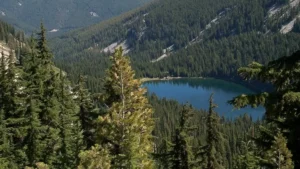
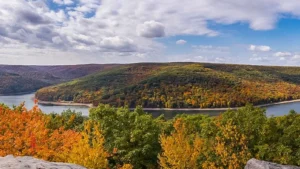


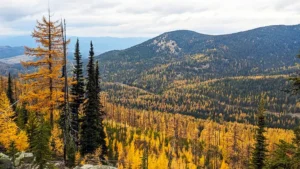
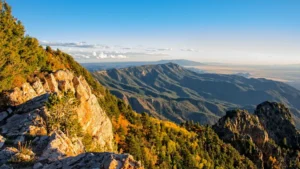

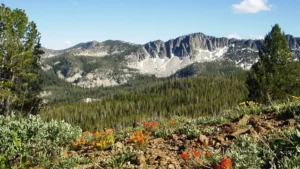


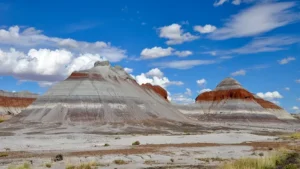
Leave your comment